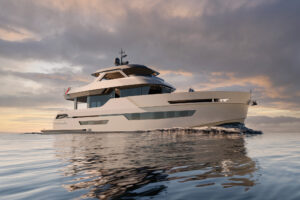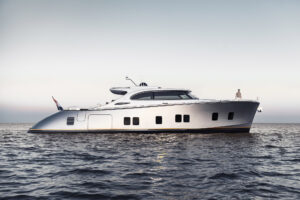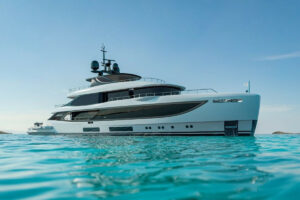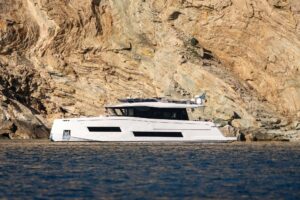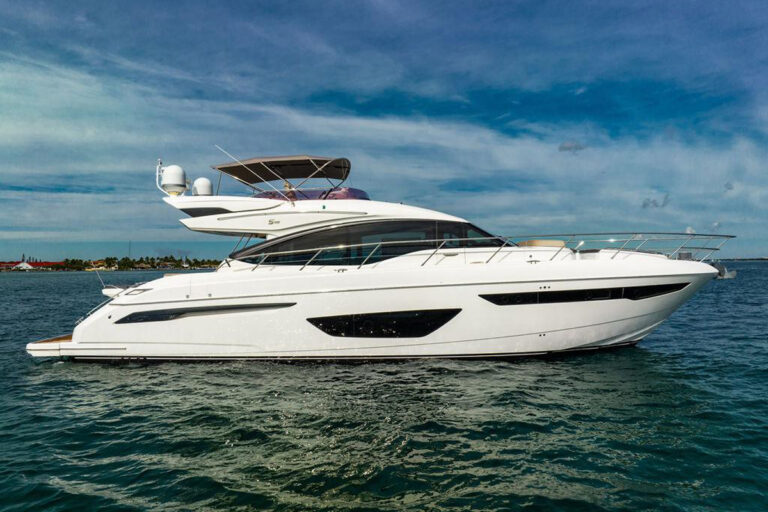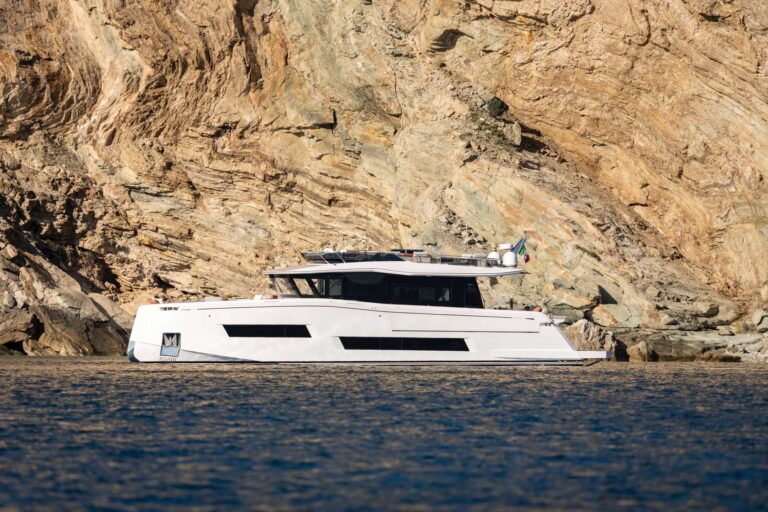
clbravo88-446.jpg

cl-bravo-88-helm.jpg
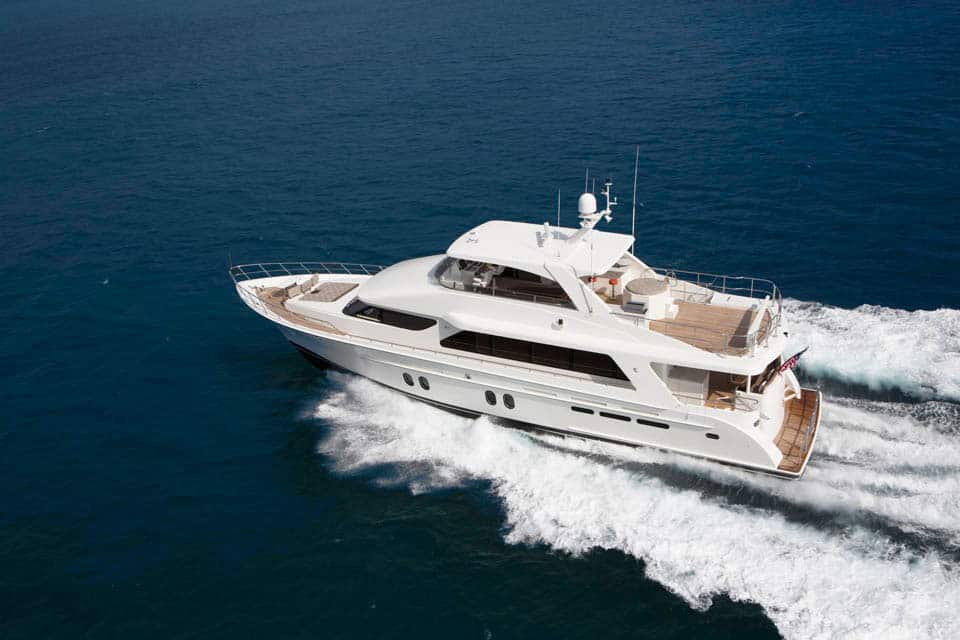
clbravo88-127.jpg

cl-bravo-88-master-1_1.jpg

cl-bravo-88-bar.jpg

cl-bravo-88-dining_1.jpg

clbravo88-502.jpg

cl-bravo-88-fwdvberth.jpg

clbravo88-salon.jpg

cl-bravo-88-vip.jpg

cl-bravo-88-twinguest.jpg

clbravo88-287.jpg
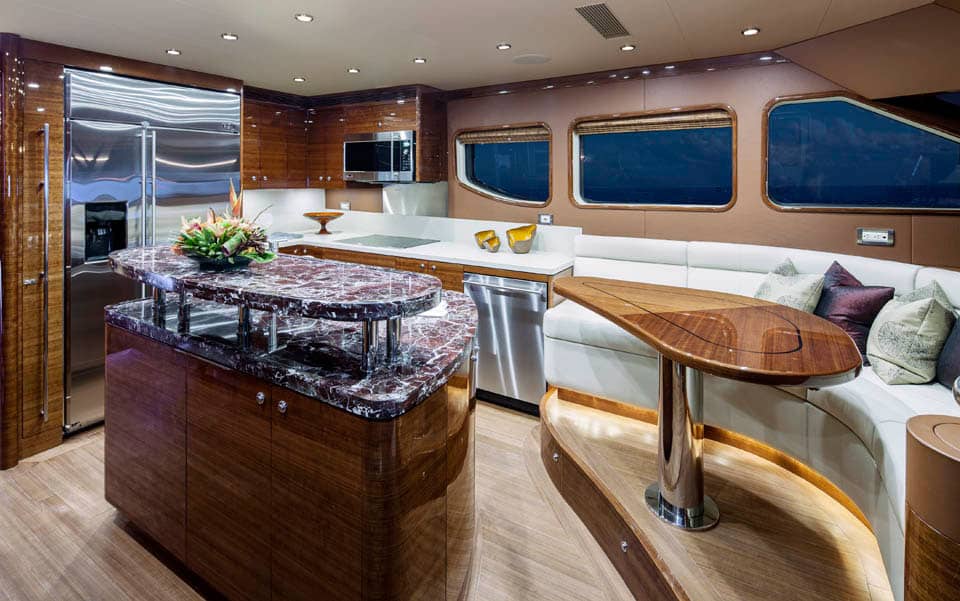
cl-bravo-88-galley-1_1.jpg

clbravo88-stairs.jpg

cl-bravo-88-masterhead.jpg

clbravo88-407.jpg

clbravo88-330.jpg

clresults.jpg
Speeds were measured by GPS in the Atlantic Ocean off Fort Lauderdale, Florida, in one- to two-foot seas with no
wind and 30-foot water depth and with 50 percent fuel, 90 percent water and five people aboard. Fuel consumption was measured with the Caterpillar electronic engine-monitoring system. Sound levels were measured at the lower helm with doors and windows closed. Specifications:
LOA: 88’11”
BEAM: 22’6″
DRAFT: 5’5″ (full load)
DISPL.: 175,000 lb. (full load)
FUEL: 3,000 gal.
WATER: 855 gal.
DEADRISE: 14 degrees
ENGINES (std.): 2 x 1,146 hp Caterpillar C18 ACERT diesels
ENGINES (tested): 2 x 1,700 hp Caterpillar C32 ACERT diesels
PRICE: Upon request
Cheoy Lee; 954-527-0999; cheoyleena.com

